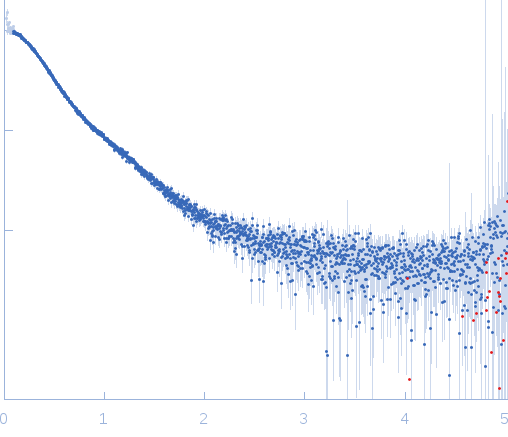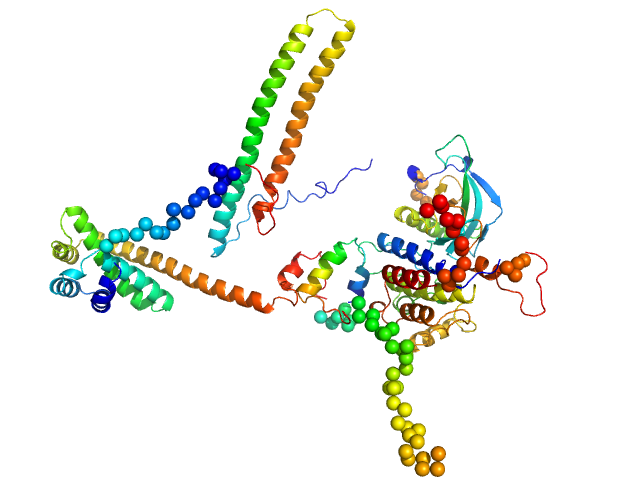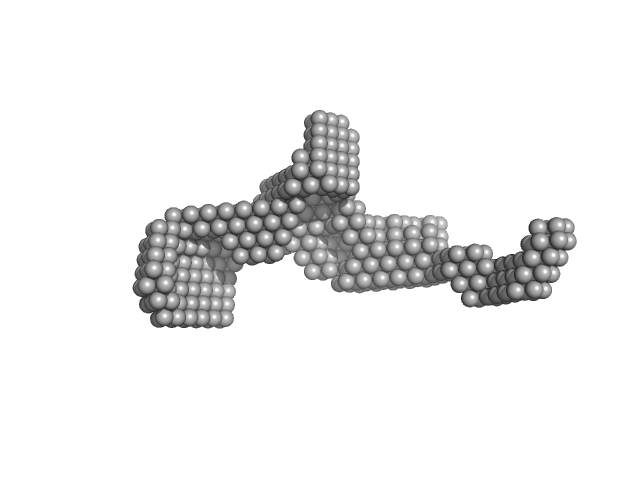|
Synchrotron SAXS data from solutions of human Hsp90 co-chaperone Cdc37 protein (CD37) in 25 mM Tris-HCl, 150 mM NaCl, 5% (v/v) glycerol, 1 mM TCEP, pH 8, were collected on the P12 beam line at the PETRA III storage ring (Hamburg, Germany) using a Pilatus 2M detector at a sample-detector distance of 3.1 m and at a wavelength of λ = 0.124 nm (I(s) vs s, where s = 4πsinθ/λ, and 2θ is the scattering angle). Solute concentrations ranging between 1.1 and 4.2 mg/ml were measured at 20°C. 20 successive 0.045 second frames were collected. The data were normalized to the intensity of the transmitted beam and radially averaged; the scattering of the solvent-blank was subtracted and the different curves were scaled for protein concentration. The low angle data collected at lower concentrations were extrapolated to infinite dilution and merged with the higher concentration data to yield the final composite scattering curve.
|
|
 s, nm-1
s, nm-1

